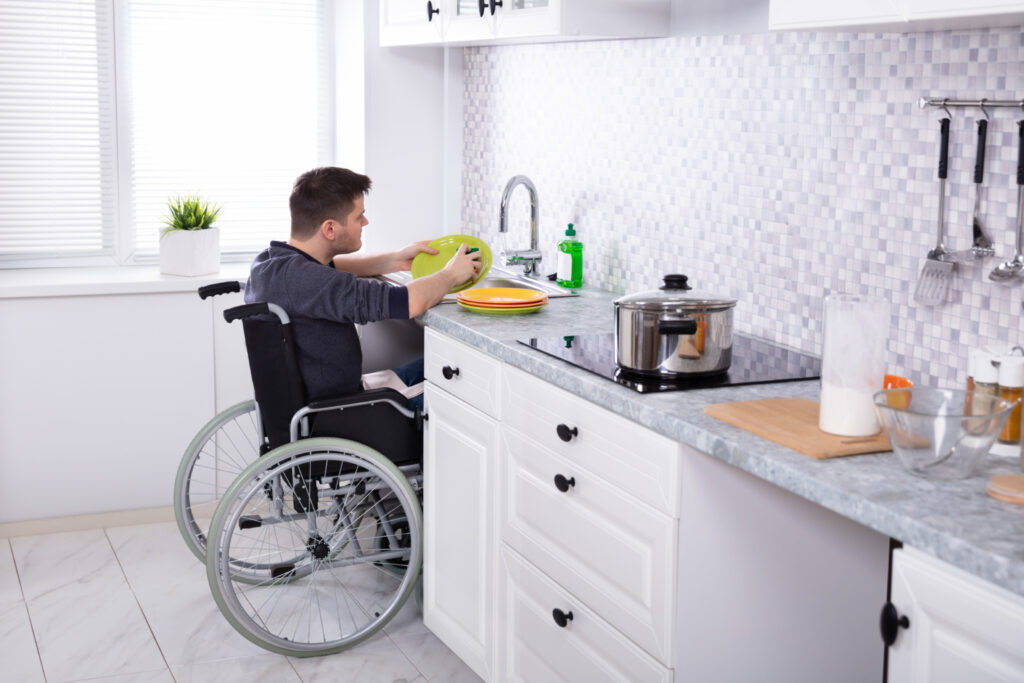
Like all other aspects related to the NDIS, people, individuals, families, and carers find the available housing option difficult to manage. Housing is important as it plays a central part in life and regards a person’s ability to live with dignity. If equal access to housing is achieved, the next step is to focus on the availability of suitable and accessible housing for people with disabilities. NDIS offers different housing support so that the participants can live to the optimum level of their choice while fulfilling their requirements. This blog is intended to provide readers with tips on NDIS housing, more specifically linked to accessible and supported housing.
1. Introduction to NDIS Housing Supports
The NDIA understands that each participant of the NDIA needs to have the appropriate support to lead an as independent life as possible. Housing supports under the NDIS are aimed at helping participants access appropriate accommodation, whether through adaptations to their own or another’s home, or moving into specially designed SDA. Such support would enable the participant’s safe and comfortable functioning within their communities.
2. Understanding Housing Types under NDIS
The housing supports in NDIS are divided into multiple categories, and each group is aimed at a different level of support necessary from a participant. The main types include:
- Specialist Disability Accommodation (SDA)
- Supported Independent Living (SIL)
- Individual Living Options (ILO)
Home Modifications
Specialist Disability Accommodation (SDA)
Definition: SDA means the specialty accommodation that is intended for clients with an extreme level of functional disability or very high dependency. It also has features that relate to the access and safety of the facilities with special needs.
Explanation: SDA as known is constructed in a way to feel the particular needs of those with special severity in disability hence facilitating a friendly lifetime for them. These accommodations may entail features like; a door with a wider space, reinforced walls, and accessible bathrooms.
Funding: SDA funding only applies to the construction of the actual housing but not to other services that cater to the residents. The funding is mapped to the participant’s NDIS plan if he or she qualifies for SDA or specialized disability accommodation.
Types of SDA:
- Basic: Housing that meets minimum accessibility requirements.
- Improved Livability: Housing with better physical access and enhanced livability.
- Fully Accessible: Housing with a high level of accessibility for participants with physical impairments.
- Robust: Housing designed to be resilient and safe for participants with complex behaviors.
- High Physical Support: Housing with a high level of accessibility and support for participants with very high needs.
Supported Independent Living (SIL)
Definition: SIL also assists in terms of daily activities aiming at enabling the participants to be as independent as possible. It is usually served in facilities that provide accommodation to many people at a given time.
Explanation: SIL may involve tasks concerned with bathing, diet, housekeeping, and administering drugs. Such supports are individualized and offered with an orientation toward the participant’s self-determination.
Funding: Purchasing and funding by note SIL enables to include the services that assist the participants in activities of daily living. However, it does not meet the expenditure for rent or even for bills.
Living Arrangements: SIL can be in a group home type situation, being in one dwelling, residing with special shared apartments or individual homes depending on the subject’s choices or requirements.
Individual Living Options (ILO)
Definition: As the name suggests, ILO is a participant-chaired housing scheme that enables people to choose how they wish to be housed. It is centered on establishing suitable living environments that will respond to the participant’s requirements and preferences.
Explanation: ILO may include living independently, with periodic checkups to make sure they are on course to living independently or living with a host family or co-residency setup. The idea is to create living conditions that do not in any way impose barriers to the subject.
Funding: The type of funding through ILO depends on the individual’s circumstances and may include help with personal, capacity building and crisis assistance.
Living Arrangements: ILO arrangements that can be used are as follows:
- Living Alone: With regular visits from support workers.
- Co-residency: Living with a person who provides support.
- Host Arrangements: Living with a family or individual who provides support and companionship.
- Living Together: Sharing accommodation with others who have similar support needs.
Home Modifications
Definition: Environmental changes for a participant are alterations carried out on the participant’s home to enhance his or her functionality in the home.
Explanation: Change can range from steps that involve constructing ramps; extension of doors, extending rails and bars, and alterations to bathrooms and kitchens. These changes assist those in the home to be more mobile and free from danger particularly persons in wheelchairs.
Funding: through the plan, the NDIS provides funding for home modifications that aim at enabling the participants to live comfortably. The level of funding is established depending on the complexity of the modifications that are required and their cost.
3. Eligibility for NDIS Housing Supports
For claims to be made to NDIS housing supports, certain conditions must be met by the participant. The specific criteria are different depending on the kind of housing assistance that is being applied for.
General Eligibility Criteria
Age: According to the condition, all participants have to be below 65 years of age at the point of their first application with the NDIS.
Residency: The participants must be Australian citizens, Australian residents, or hold the Protected Special Category Visa only.
Disability: Candidates must be experiencing at least a service-connected, irreversible illness or injury that substantially limits one or more of their life’s transactions.
SDA Eligibility
In the case of SDA, one has to prove that the person qualifies for support at a level of very high support or severe functional limitation. This often entails a report from health care providers and considers the participant’s living conditions and requirements.
SIL and ILO Eligibility
Particularly, to be qualified for SIL and ILO, a disabled person should prove that she or he needs extensive help with personal care and maintenance to be able to live on one’s own. This consists of identifying their care requirements and the environment in which they live.
4. Benefits of NDIS Housing Supports
NDIS housing supports offer numerous benefits to participants, including:
- Improved Independence: Accessible housing and support services enable participants to perform daily activities with greater ease and autonomy.
- Enhanced Safety: Modifications and specialized accommodations reduce the risk of accidents and injuries in the home.
- Better Quality of Life: Appropriate housing support can improve participants’ overall well-being and quality of life.
- Social Inclusion: Supported living arrangements promote community participation and social interaction, reducing feelings of isolation.
5. Steps to Access NDIS Housing Supports
Accessing NDIS housing support involves several steps, from applying for the NDIS to developing and implementing a housing plan.
Step 1: Apply for NDIS
To access housing support, individuals must first apply for the NDIS. This involves submitting an application form and providing evidence of disability.
Step 2: Develop a Plan
Once accepted into the NDIS, participants work with a planner or Local Area Coordinator (LAC) to develop a personalized plan. This plan outlines the participant’s goals, support needs, and the types of housing support required.
Step 3: Assess Housing Needs
Participants undergo a detailed assessment to determine their specific housing needs. This assessment considers factors such as the participant’s current living situation, support requirements, and preferences.
Step 4: Secure Funding
Based on the assessment, the NDIA allocates funding for the necessary housing support. This funding is included in the participant’s NDIS plan.
Step 5: Implement the Plan
With funding secured, participants can begin to implement their housing plan. This may involve finding suitable accommodation, arranging home modifications, or organizing support services.
Step 6: Review and Adjust
NDIS plans are reviewed regularly to ensure they continue to meet the participant’s needs. Participants can request a review at any time if their circumstances change.
6. Conclusion
Awareness and utilization of NDIS housing support can go a long way to improve the quality of life for people with disability, where they get to experience a standard living environment with all the necessities to support them. The NDIS provides various housing solutions depending on the client’s requirements which include supported independent living, specialist disability accommodation, and home adaptation. Thus, a participant can approach such choices and obtain the necessary assistance to attain their goals and lead a meaningful life.
